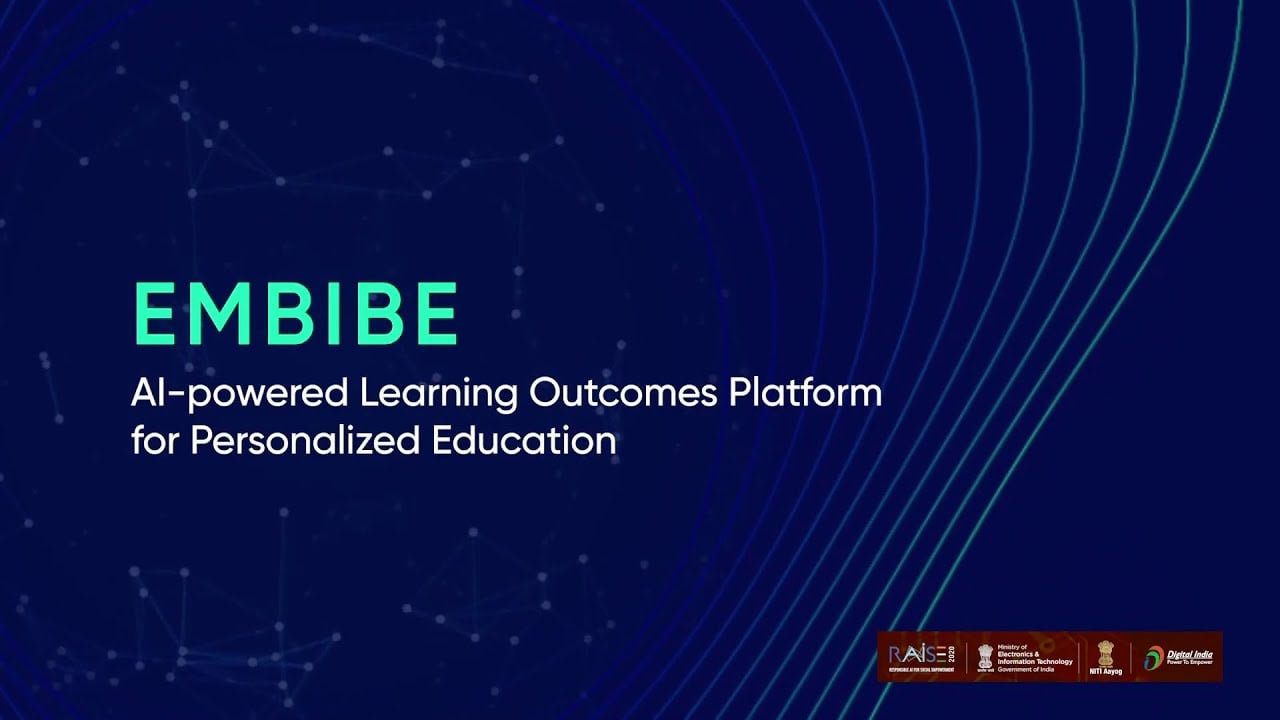 Previous Article
Previous Article

Published on 07 Nov 2023
An electrolysis experiment on the AI-powered learning platform for school and competitive exams Embibe’s 3D lab app starts with the preparation of a concentrated chemical solution first leads you to select pieces of equipment, chemicals (guiding what’s right and what’s wrong for the experiment), then it instructs you to drag the watch glass, take the glass rod and stir it, test the neutrality by adding an universal indicator. The experiment is then set up with electrodes and moves to the procedure.
When internet penetration in India was progressing, the five-year economic growth-leap- from $2 trillion to $5 trillion too was in the works simultaneously. To meet the future demand, education needs to be richer, wholesome, personalised and should produce thorough professionals. Correspondingly, in terms of models, elements such as course search, discovery, advisory, admissions processing, payments, and certificate issue have migrated to fully digital and the learning happens through all modes – online, classroom, and blended- where learning is through both online and offline.
COVID-19 was when edtech-reckonings emerged; it was also an exceptional time because of the school closures, drop-outs and a country-wide disruption in the access to education.
“COVID-19 was not a disruption but a distortion,” says Aditi Avasti, founder and CEO, Embibe. “It was when quick-win use-cases got amped up with marketing. They died down eventually because they couldn’t be digitally transitioned and didn’t have true utility.”
“Post COVID-19, edtech is a maturing market; from niche, it has become mainstream,” says Arjun Mohan, India CEO, BYJU’S ed-tech brand that solves the problem of access to quality and affordable education at scale. “We use the best pedagogy, curriculum, content and personalise it according to the needs of every kind of student.”
By all means, 21st-century education relies greatly on technology, as an enabler. “Because the best teacher and the remotest student can easily get access to each other via technology and it applies for school education and professionals,” says Mohan Kannegal, CEO- India and APAC, Emeritus, an upskilling platform for professionals.
The maturing market is driving the evolution of course content and presentation- from nuts-and-bolts format to reinventing the utility of good-old visuals, videos and also looping in AI and virtual reality (VR). In that process, Avasti points out that, “Embibe uses AI to analyse the strengths and weakness of every student and also has enough content bank to empower the teachers and engage every student at scale.”
The efficacy of each platform’s solution varies based on the intuitiveness and creativity that it instils in the learners. BYJU’S curriculum-based, exam-oriented approach is aimed at solid outcomes. Engagement on the content, subsequent scoring in assessments and improvement in marks over time helps them assess the acceptance. Emeritus uses its annual student survey and Embibe the learning outcomes to gauge course-effectiveness. Embibe’s apps and tools create powerful experiences for both the students and teachers to leverage their intelligence.
But has post COVID-19 and global tech meltdown taken edtech’s shine and numbers away? Are China’s leash-tightening initiatives and edtech lay-offs in the U.S and India along with the 30% drop in NASDAQ any indicators that edtech’s heydays are over? In fact, according to Crunchbase, compared to the 60 investments of $100 million+ globally over 2021 and 2022, this year has not seen a promising round yet.
Avasti argues that the state of the industry was proof to the brands’ incompetence to digitalisation and unsustainability because of their price points. “In a country like India where only 10% of the population can afford to pay school fees above ₹2,000, how can education apps be sold at one lakh?” she asks. Embibe’s in-class, smart-class and state-of-the-art, free-standing app in different languages cost ₹1,500 per student, per year. “Technology’s responsibility is to lower the cost of delivery and increase the quality of output for the entire ecosystem,” she adds to emphasise.
Kannegal avers that the investor interest has not diminished but only become more aligned with the evolution. “Companies with a sustainable business model that generates profits and has the strength to support themselves in the long run, in addition to pivoting to profitability make the cut.” To keep up with the change, he adds,”Education needs to adapt as the technology advances.”
The responses for all these learning platforms have remained satisfactory. There is traction for BYJU’S K12 and competitive exam preps. Professional skilling segment is also still growing rapidly with enrolments at Emeritus up by 40%, with CXO courses, product management, AI, and machine learning gaining more demand.
“Edtech has hardly scratched the surface of the vast Indian education market. In addition to customer satisfaction, building companies with right unit economics and profitability is important today,” reasons out Mohan.
Avasti feels that education technology in India has not yet embraced education at all. Each learning should be attributed to bettering the deliverables for the future.
“Technology in education should aid and amplify both students and teachers’ roles and outcomes in the classroom. This kind of edtech is not vitamins; it is morphine,” Avasti makes the take-away clear.